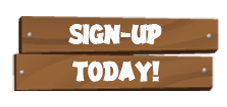This project sounds like great fun to me, and I figured I would mix the old style video with some current cutting edge science and tech. The video will be titled Curiosity: Your Friendly Robotic Explorer. My inital script is below, and the script itself kinda describes the graphics and video that I need to collect. Luckily, NASA and JPL has made it easy to find all this stuff.
I’ll need to find a kid to be Johnny, either one from the camp I am working at, or my own son John (who may be a little young for the part). I’ll just take stills of him to go into the video.
Also, I may right an “alternate ending” to insert in after the spacecraft sucessfuly lands (fingers crossed) so I can use the video with all of my 530 k-5 students when school starts later in August.
Here we go…
Open on starry sky with one unnaturrally bright object.
Narrator: Hey Johnny, did you ever wonder about that bright, red star in the night sky.
Johnny: No, not really.
Nar: Great! That star isn’t really a star at all, its a planet. The planet Mars.
Johnny: Um, ok…
Nar: Johnny, did you ever wonder about life on Mars. Were there living organisims on Mars in the past? Could there be things living on Mars now?
Johnny: No, not really.
Nar: Great! Scientists have wondered about life on Mars for a long time. Long ago, before we had powerful telescopes and orbiting spacecraft to take accurate imagry of Mars, scientists imagined that they saw series of canals crossing Mars’ surface and surmised that there was an advanced civilization of aliens living there. Once the Mariner spacecraft began flying by and orbiting Mars in the late 1960s and early 1970s we learned the truth. Mars’ surface is a vast desert, most likely devoid of life.
Johnny: Ok, good. That’s settled. Can I go now?
Nar: Not so fast, Johnny. There are still many questions about Mars’ past and even its present that haven’t been answered yet. Did Mars have vast oceans in its past, and could these oceans have hosted life? If so where did all of that water go? Is much of it still under Mars’ surface, and could there be life, microscopic or otherwise, living there now? It is these questions that the last two Mars rovers, Spirit and Oppurtunity, set off to begin answering 6 years ago and their big brother, Curiousity is heading to Mars to continue gathering data about now.
Spirit and Oppurtunity found evidence at both of thier landing sites, on opposite sides of Mars, that vast amounts of surface water once existed in the planet’s past. Curiosity will land with better, more powerful instuments that will be able to analize and determine how differnt rocks and soils were formed based on their chemistry.
Curiosity has two main cameras, a high-resolution camera mounted on its mast, and a digital microscope mouned on its arm that can be used to look close up at anything interesting it comes across. It has a laser spectromoter system that will blast rocks in front of the rover and do a quick analysis of their makeup with to see if it wants to do further investigation. Its arm has a grinder and collection system that can pick up samples and deposit them in the rover’s back where it houses a mini chemestry lab, including an x-ray spectrometor, a mass spectromotor, and a gas chromotograph, which will be able to identify any organics if they exist. The whole thing is powered by a small nuclear reactor almost identical to the ones that are still powering the Voyager craft 35 years after their launch.
Johnny: Wow, thats actually pretty cool!
Nar: You bet, kiddo! Now it just needs to get there safely, and that’s the most challenging part of the mission. The engineers who built Curiosity call the entry, decent, and landing sequence “The Seven Minutes of Terror”! The spacecraft will enter the atmosphere and slow itself down with atmospheric drag, shedding its heat shield once it is moving slowly enough. Next a parashoot will slow it down further, but not enough for it to land. It will eject the shoot, and engage landing thrusters bringing the rover almost to the surface. Finally, the landing craft will lower the rover with a crane system, cut the cables once its reached the surface, and then fly safely away from the rover. The rovers systems will wake up and get right to work.
Johnny. Um, that’s all amazing, and just a little crazy. When did you say this is all going to happen?
Nar: On the night of August 4th or morning of Aug. 5th, depending on where you live. You will have to tune into NASATV to watch the action live. Then check out the Curiousity website at JPL to follow the rovers progress and learn Mars’ history and present along with project scientists.
Johnny: OK! I Will!
Closing music, credits, end….



















